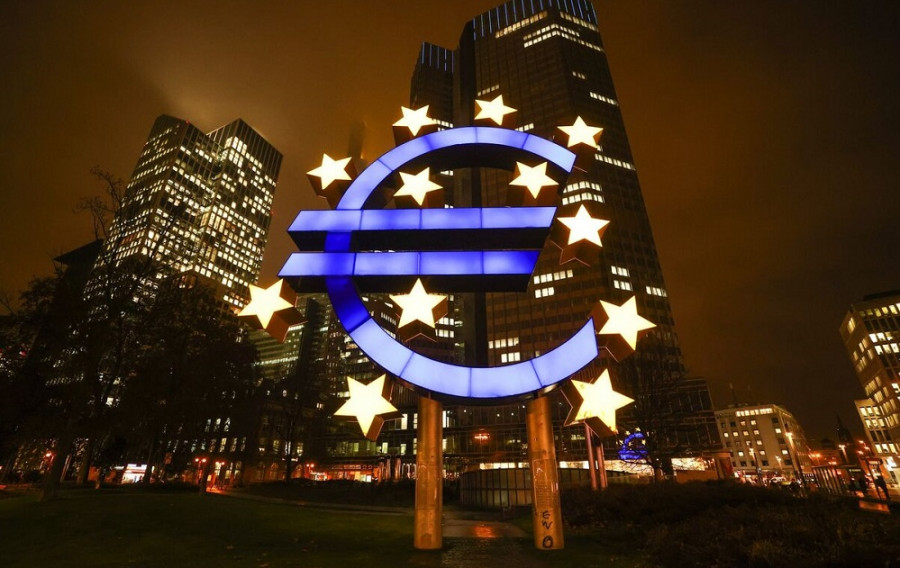Thursday is an important day for the euro. The European Central Bank will announce the results of its January meeting and outline its position on future monetary policy prospects. In recent weeks, many ECB representatives have made public statements. Almost all of them have expressed hawkish messages, refuting rumors that the central bank will start lowering interest rates very soon, possibly in the early spring.
However, several factors need to be considered here.
Firstly, for some reason the hawks have been the most "loud" representatives, i.e. active in terms of communication with the press, so it is not entirely correct to put an "equal" sign between their rhetoric and the ECB's consolidated position. Secondly, besides inflation, which we will discuss shortly, there are other macroeconomic indicators that show that the eurozone economy is barely avoiding a recession. Therefore, it's impossible to say that the outcome of the January meeting is predetermined. We can only predict the formal results of this meeting: there is no doubt that the ECB will maintain all parameters of its monetary policy unchanged. However, regarding the tone of the ECB's rhetoric, surprises are possible. The central bank may express a hawkish stance, firmly denying the possibility of rate cuts (at least until June), emphasizing its focus on inflation, and in particular, inflation data in Germany and France. Alternatively, the ECB may take a more cautious stance, allowing for monetary easing even before the summer. In this case, the focus will be on the side effects of high interest rates and the decline in core inflation in the eurozone.

A week ago, a Reuters poll of economists found a majority expecting a rate reduction in the second quarter of 2024. The first ECB interest rate cut will take place by the end of the second quarter, said 62 of 85 economists, of which 38 said June and 21 said April. Only 23 respondents believe that the central bank will start easing monetary policy in the third quarter. However, 100% of those surveyed are confident that the ECB will keep all parameters of its monetary policy unchanged in January.
What does this tell us? First and foremost, it suggests that the ECB could fuel the euro's strength. If it indicates that the first step in the rate cut cycle will not be made until July, i.e., the third quarter. This is possible, given the hawkish stance of many ECB representatives (such as Francois Villeroy de Galhau, Tuomas Valimaki, Gediminas Simkus, Klaas Knot, Bostjan Vasle) and the vague comments from ECB President Christine Lagarde, who hinted at possible summer rate cuts.
Most of the ECB members who have spoken over the past three weeks have emphasized the need to be cautious with monetary easing. They believe that the market's rate trajectory (i.e., in the spring of this year) "may be doomed to fail." Austrian Central Bank Governor Robert Holzmann even stated that there are no guarantees of rate reductions for the year 2024.
Take note that inflation in the euro area will likely accelerate in the coming months for several reasons: tax increases, reduced subsidies in several EU countries (including Germany), and ongoing tensions in the Red Sea, which have impacted the cost of maritime transport (complicating logistics and increasing insurance costs). These reasons are not situational, so inflation is expected to gain momentum in the near future. It's worth remembering that euro area annual inflation rose by half a percentage point to 2.9 % in December 2023, despite seven consecutive months of declining CPI prior to that. In addition, Germany and France have also seen a rise in inflation in their own respective countries.
Furthermore, the latest Purchasing Managers' Index data reflected that the downtrend is getting weaker in the manufacturing sectors of Germany and France, as well as the overall European region. In particular, the eurozone manufacturing PMI entered the "green" (46.6 points), marking the best result since March 2023. Positive developments were observed in components such as production volume, employment, and new orders.
Therefore, considering the prior statements of several ECB representatives, recent inflation reports, and the reasons contributing to the acceleration of inflation in the eurozone, we can assume that the ECB will adopt a more hawkish (assertive) stance compared to the expectations of most market participants who anticipate the first rate cut in the second quarter. The central bank may provide clearer timing guidance, indicating the possible rate cut in the second half of the year (or a more hawkish version – "not before the second half of the year").
The realization of such a scenario would strengthen the euro across the market, including against the dollar. In this case, if key reports published in the United States (such as US GDP data and the core PCE index) do not act as a counterbalance (i.e., do not work in favor of the greenback), the bulls can expect another attempt to break through the 1.10 level.
The material has been provided by InstaForex Company - www.instaforex.comfrom Forex analysis review https://ift.tt/dB6UgL5
via IFTTT
